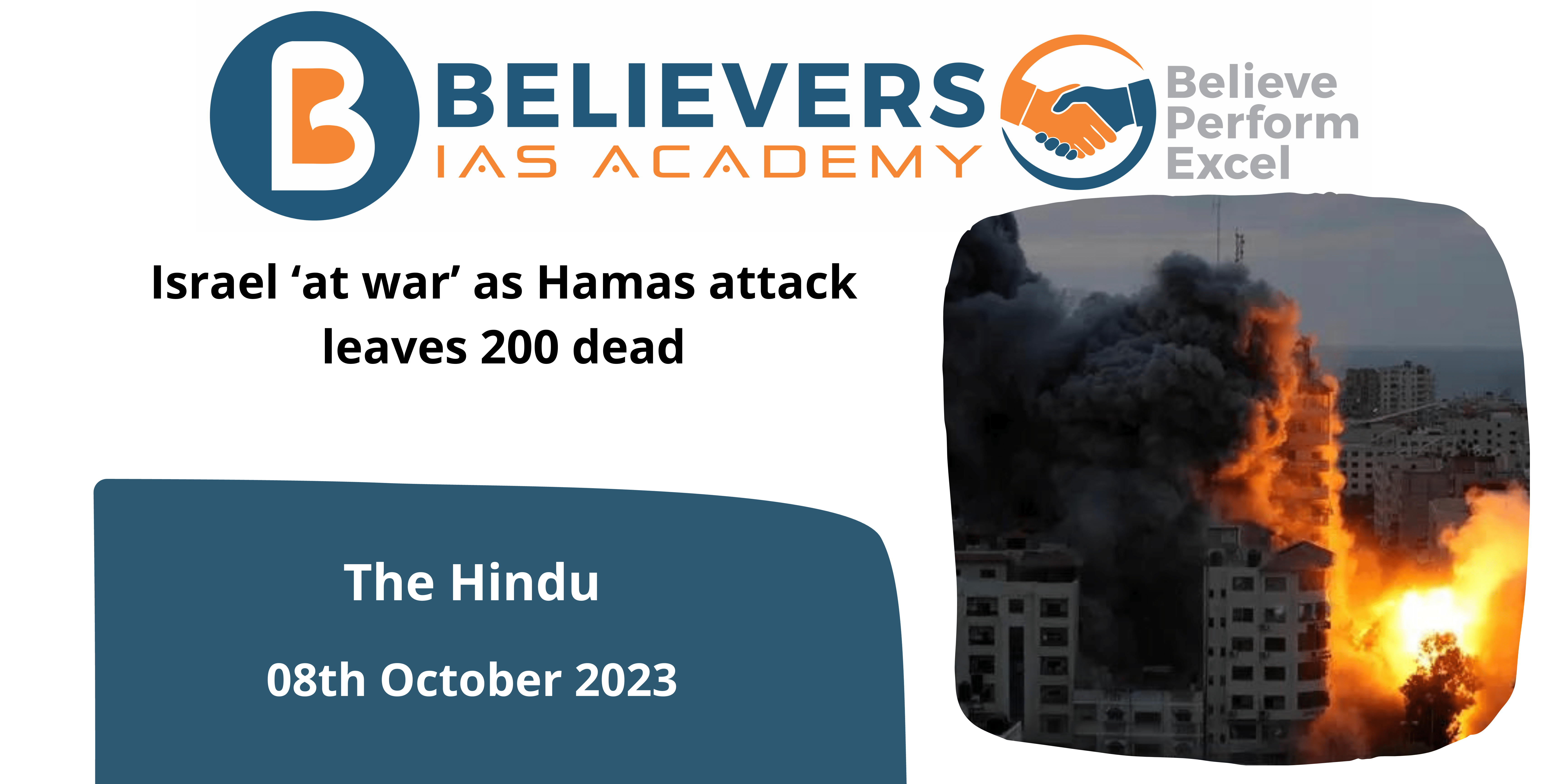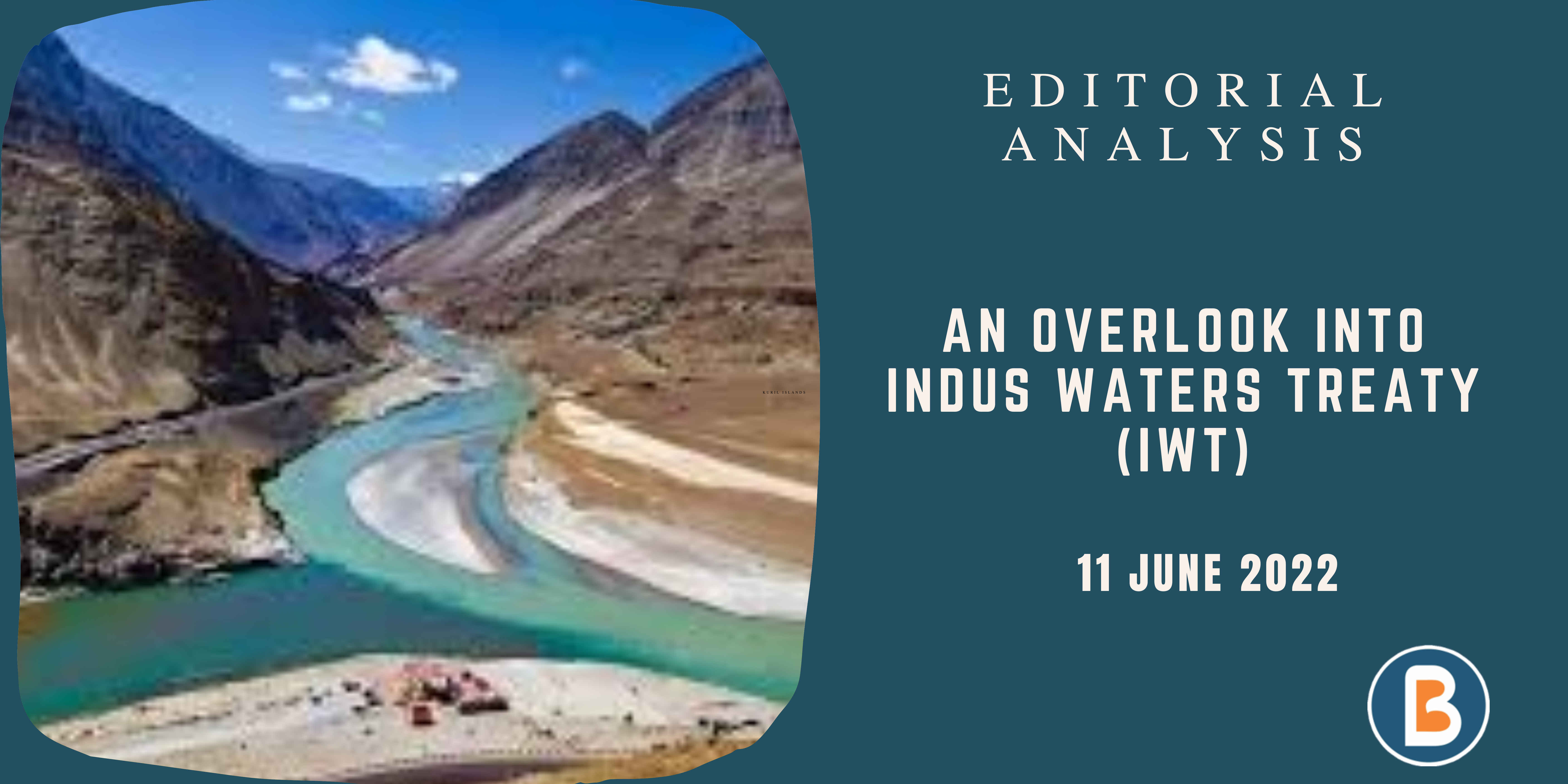Israel ‘at war’ as Hamas attack leaves 200 dead
Context
On Saturday, the Palestinian Islamist group Hamas launched the deadliest attack on Israel in years, killing at least 200 people and claiming to have taken dozens of hostages in a surprise attack combining gunmen crossing into Israel and a barrage of missiles fired from Gaza.
What is the background context of the Israel-Palestine conflict?
- Late nineteenth century: The Zionist movement began among Jewish communities in the late nineteenth century, arguing for the construction of a Jewish state in Palestine. In response to escalating anti-Semitism throughout Europe, this movement gained traction.
- Balfour Declaration (1917): The Balfour Declaration (1917) was released by the British government during World War I, expressing support for the formation of a “national home for the Jewish people” in Palestine. This declaration paved the way for future tensions.
- British Mandate: The League of Nations handed Britain a mandate to oversee Palestine following World War I. As Jewish immigration expanded, conflicts between Jewish immigrants and the Arab community rose.
- United Nations Partition Plan (1947): In 1947, the United Nations suggested dividing Palestine into distinct Jewish and Arab governments, with Jerusalem serving as an international metropolis. The idea was endorsed by Jewish authorities but rejected by Arab leaders, resulting in the Palestine War of 1947-1949.
- 1948 Arab-Israeli War: Following the establishment of the State of Israel in 1948, neighbouring Arab states such as Egypt, Jordan, and Syria invaded Israel, resulting in the first Arab-Israeli conflict. The war ended in armistice accords, with Israel taking control of more area than the UN partition plan had originally authorized.
- Palestinian Liberation Organization (PLO): Led by personalities such as Yasser Arafat, the Palestinian Liberation Organization (PLO) emerged as a significant force campaigning for Palestinian self-determination and the end of Israeli occupation. The PLO achieved international acclaim.
- Peace Process: Several diplomatic efforts have been made to resolve the conflict, including the Camp David Accords (1978), the Oslo Accords (1993), and the Camp David Summit (2000). These efforts intended to achieve a two-state solution with an independent Palestinian state alongside Israel but encountered various roadblocks.
- Settlements and Land Disputes: The construction of Israeli settlements in the West Bank and East Jerusalem has been a major source of disagreement, with Palestinians seeing these settlements as an impediment to the establishment of a future Palestinian state.
- Status of Jerusalem: The status of Jerusalem is a very contentious issue, with both Israelis and Palestinians claiming it as their capital. The city’s status has been a major impediment to peace talks.
- Security Concerns: Israel maintains authority over certain territories due to security concerns, including terrorism and the possibility of assaults.
- International Involvement: Various international actors, including the United States, European Union, United Nations, and Arab states, have been involved in mediation and peace efforts.
What was the recent provocation in Israel-Palestine Relations?
The most recent flare-up in the Israel-Palestine conflict began when Hamas launched an offensive in reaction to the desecration of the Al-Aqsa Mosque and escalating settler violence. Hamas launched thousands of rockets into Israel and dispatched fighters. Israel retaliated by bombing Gaza.
Who are the Hamas Group?
- Hamas is a militant organization that rules Gaza, a Palestinian territory. Hamas is one of the Palestinian territories’ two major political parties. The organization is well-known for its armed opposition to Israel.
- Hamas was established in 1987, at the start of the first Palestinian intifada (uprising). It is a branch of the Egyptian Muslim Brotherhood. Hamas was elected in the most recent elections in 2006.
- In the Gaza Strip, Hamas administers over two million Palestinians.
- Within the Palestinian territories, Hamas is supported by a strong sociopolitical apparatus. Hamas has been declared a terrorist group by dozens of countries. The United States considers Hamas to be a terrorist group.
- The acronym for Hamas is Arakat al-Muqwamat al-Islmiyyah, which means “Islamic Resistance Movement.”
Why did Hamas attack Israel?
- Israeli Actions Have escalated: Hamas has noted Israel’s escalated actions against Palestinians in several places, including the West Bank and Jerusalem. These actions may include settlement issues, movement limitations, and security operations.
- Treatment of Palestinians in Israeli Prisons: Hamas also expressed complaints over the treatment of Palestinians detained in Israeli facilities. The treatment and conditions of Palestinian detainees have long been a subject of contention.
What is India’s Stand Over Attack on Israel?
- Solidarity with Israel: In response to Hamas strikes from Gaza, Indian Prime Minister Narendra Modi voiced solidarity with Israel. Prime Minister Modi expressed his sympathies to the conflict’s victims and their families.
- Safety Advisory for Indian Nationals: Given the ongoing violence, the Indian embassy in Tel Aviv issued safety advisories to Indian nationals in Israel, asking them to maintain security measures and stay close to safety shelters. This warning is designed to ensure the safety and well-being of Indian residents living in or visiting Israel during this difficult time.
Conclusion
The Israeli-Palestinian conflict continues to be difficult and entrenched, with no clear solution in sight. It continues to have a substantial effect on residents’ lives and is a focus of diplomatic and international initiatives.




